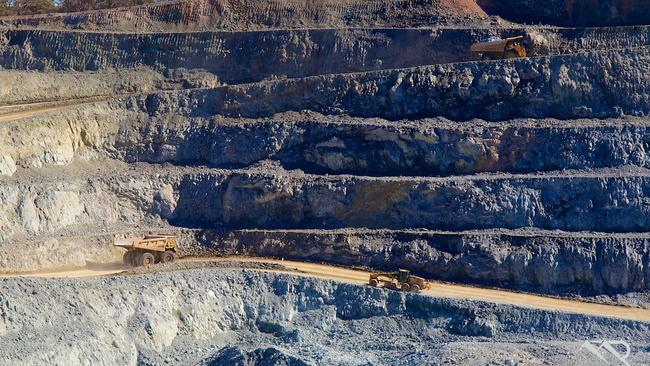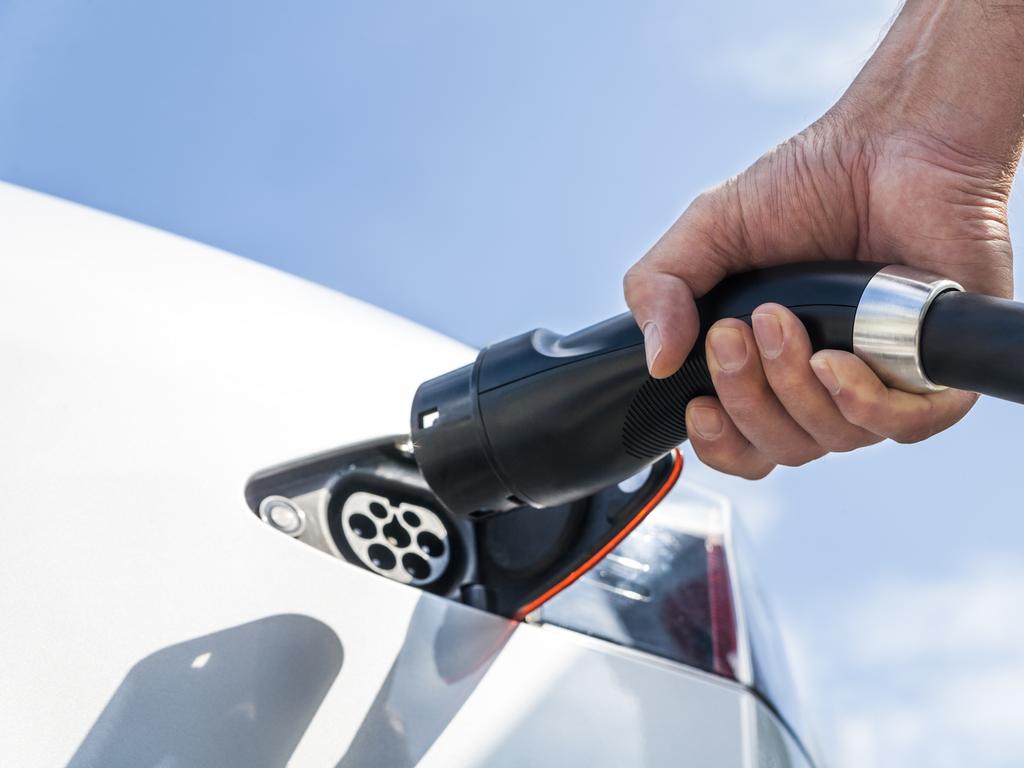EV slump sparks lithium export fall, as uranium prices surge
Mining exports are on track to plunge from a record $466bn to $348bn as prices for lithium, LNG and thermal coal soften and supply pressures drive global demand for iron ore and uranium.

Australia’s mining and energy exports are on track to plunge from a record $466bn to $348bn by 2024-25 as prices for lithium, LNG and thermal coal soften and supply pressures drive higher global demand for iron ore and uranium.
A Department of Industry and Resources quarterly report says easing concerns around a hard landing in the US, and an improved outlook for China after stronger economic results and moves to stabilise its failing property market, have strengthened resources and energy commodity forecasts.
As world economic growth remains flat and tighter financial conditions are imposed to lower inflation, the report said lithium prices had fallen sharply from a late 2022 peak over concerns about “short-term demand for electric vehicles and ongoing increases in lithium supply”.
While export volumes of Australian lithium ores and chemicals are projected to grow in coming years, the “sharp retracement in lithium prices is expected to see lithium exports fall from $20bn in 2022-23 to $14bn in 2023-24”.
Australia remains the world’s leading source of lithium with a 50 per cent share of extraction last year, and output will increase on the back of mine expansions and new projects.
“There have been reports highlighting weakness in the EV sector, particularly in the US. EV manufacturers including General Motors, Ford and Tesla have delayed some investments in factories in response to disappointing EV sales growth and the broader economic slowdown,” the report said.
“In the near-term, the demand for lithium is facing headwinds due to slower-than-expected growth in EV uptake in recent months, especially in the US. Prices are not expected to return to previous high levels (such as during 2022 and early 2023) before 2025, due to the forecast surplus in supply over the outlook period.”
Amid a Coalition push to remove uranium mining bans in some states, the resources update, released on Monday, says “there has been a surge in uranium prices in recent months”.
“New supply problems have added to the impact of hoarding and, on the demand side, some nations continue to favourably reconsider the role nuclear power can make in meeting their ‘net zero’ targets and ensuring their energy security.
“Prices are now forecast to climb to around $US92 a pound by 2025, driven by a structural market deficit. Australian exports are forecast to increase from around 4800 tonnes in 2022-23 to around 5700 tonnes by 2024-25.
“Price and volume growth are expected to lift uranium export values from $812m in 2022-23 to $1539m by 2024-25.”
Beijing’s strong capital expenditure on infrastructure and manufacturing, and rising vehicles exports, have lifted domestic steel production, with low Chinese iron ore inventories pushing-up global prices. Stronger prices helped Australia’s iron ore export earnings increase to $33.1bn in the September quarter.
“China is projected to see modest falls in steel output … to 2025. This is expected to soften the rate of growth in global iron ore demand in the coming years, driving iron ore prices down,” the report said. “China’s stated aim to shift its economy away from investment-led (and toward consumption-led) growth is expected to be a key driver of this downward trend in prices.”
Lower prices are projected to trigger a fall in thermal coal exports from a record $65bn in 2022-23 to $29bn by 2024-25. Drier weather conditions are expected to help thermal coal production, as China resumes trade with Australian exporters.
Metallurgical coal prices, which remain well above pre-2019 levels and spiked in recent months due to global supply concerns, are expected to decline over the coming year. While export volumes will be higher, the value of metallurgical coal exports is expected to fall from $61bn to $41bn in 2024-25. India is expected to overtake China as the primary growth market for steel production.
LNG exports are predicted to ease from $92bn in the last financial year to $64bn by 2024-25, “as global energy prices soften and some supply disruptions resolve”.
“Geopolitical risks have worsened with the outbreak of conflict in Gaza. However, seasonal risks have abated as European countries successfully filled inventories ahead of the northern winter. Longer-term structural pressures should ease after 2025 as the US and Qatar bring new supply sources online.”
Resources Minister Madeleine King said the “outlook for resources investment remains healthy, particularly for the critical minerals that are crucial for low-emissions technologies needed to help the world decarbonise”.
“Australia’s resources sector remains the engine room of the nation’s economy. Resources are critical not only to our prosperity, but to our commitment to reducing carbon emissions … The road to net zero runs through Australia’s resources sector.”
A separate resources and energy projects report said there has been a 75 per cent increase in the value of committed critical minerals projects in the past year, rising from $6.7bn to $11.8bn.
But Minerals Council of Australia CEO Tania Constable said Australia’s critical minerals potential was being undermined by the Albanese government.
“The minerals sector is under a continuous barrage of attacks from Australian governments. Regressive and highly targeted policy interventions on industrial relations, environmental approvals, energy and tax and royalties are weakening the nation’s most productive industry and threatening its future,” Ms Constable said
“The cumulative effect of such damaging policies (is) acting as a critical blockage to the investment required to build the mines of the future; the very mines that will drive Australia towards meeting its net-zero target.
“It is all well and good to promote minerals as critical and strategic, but Australia needs those minerals out of the ground and processed, as fast as possible.”
At the end of October, energy and resources projects under development had risen from 393 to 421, including 86 valued at $77bn where a final investment decision has been taken and 46 worth $30bn that are in advanced feasibility stages. Over the year, 29 projects valued at $21bn were completed and began commercial production. The bulk of investment in committed projects was dominated by oil and gas.








To join the conversation, please log in. Don't have an account? Register
Join the conversation, you are commenting as Logout